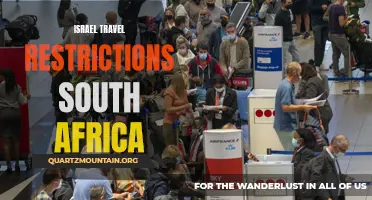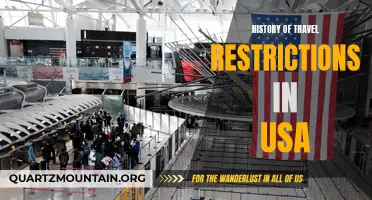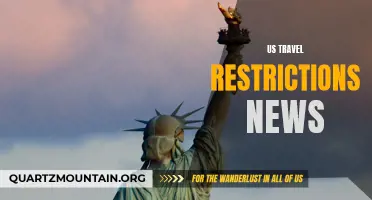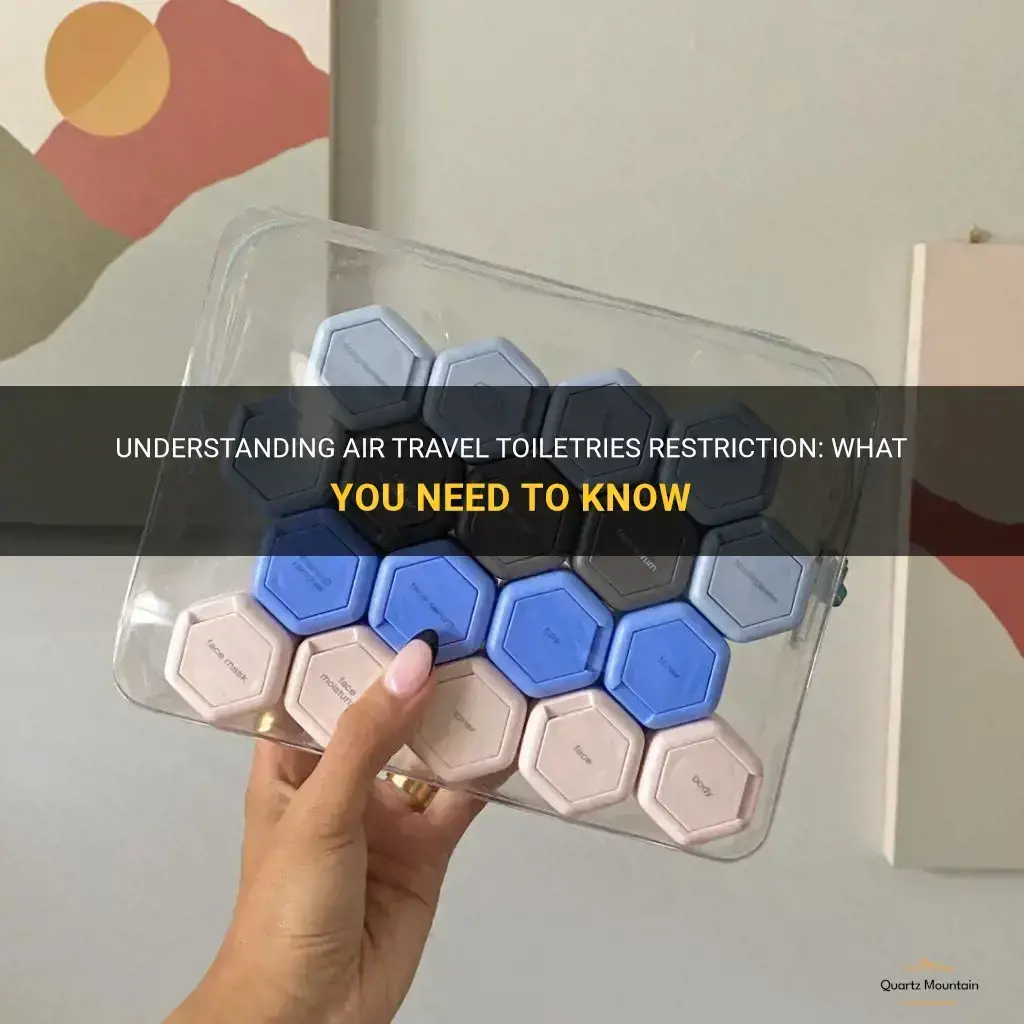
Have you ever wondered why there are strict restrictions on the types and quantities of toiletries you can bring on an airplane? Air travel toiletries restrictions have become a common part of our flying experience, but they were put in place for important reasons. From preventing potential security threats to ensuring the safety of passengers, these restrictions play a crucial role in maintaining the integrity of air travel. In this article, we will explore the history and reasoning behind these restrictions, as well as some useful tips for navigating them during your journeys. So buckle up, as we embark on an informative and fascinating journey into the world of air travel toiletries restrictions!
| Characteristics | Values |
|---|---|
| Liquids, gels, and aerosols | 3.4 ounces (100ml) |
| Containers must fit in a clear, quart-sized bag | |
| One bag per passenger | |
| Prescription medications and medically necessary items | Exempt |
| Duty-free liquids purchased at the airport | Exempt |
| Baby formula and breast milk | Exempt |
| Liquid medications | Exempt |
| Snow globes | Must be in checked luggage |
| Sharp objects | Must be in checked luggage |
| Firearms and ammunition | Must be in checked luggage |
What You'll Learn
- What are the current air travel toiletries restrictions?
- Can I bring my own shampoo and conditioner on a flight?
- Are there restrictions on the size of toiletries I can bring in my carry-on bag?
- What items are not allowed in my carry-on bag in terms of toiletries?
- Are there any exceptions or special rules for certain types of toiletries, such as medications or baby products?

What are the current air travel toiletries restrictions?
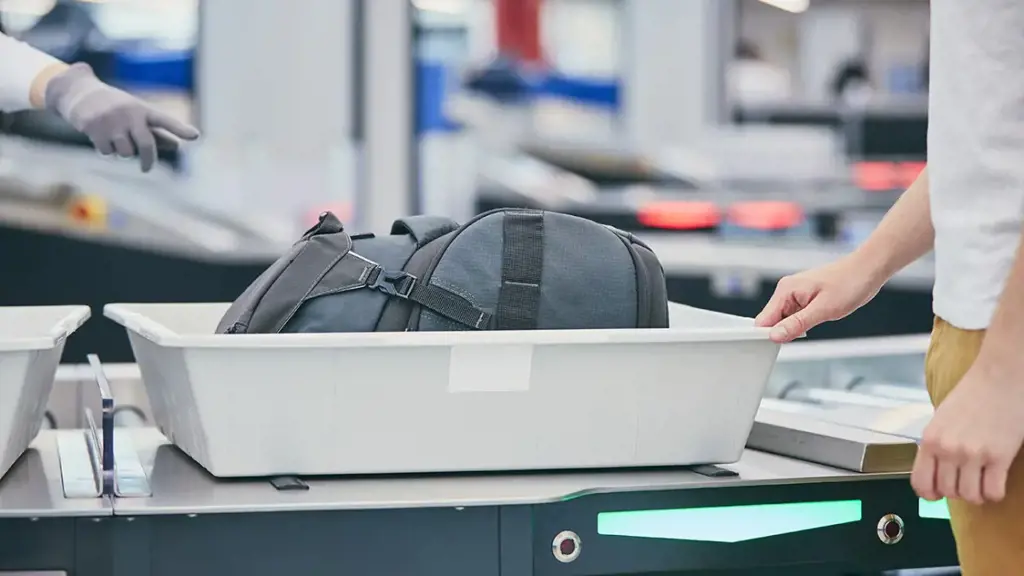
Air travel toiletries restrictions have been in place for several years now, and they continue to evolve as security concerns change. These restrictions are put in place to ensure the safety and security of all passengers. It is important for travelers to understand what they can and cannot bring in their carry-on bags to avoid any issues at security checkpoints.
The current air travel toiletries restrictions mainly revolve around the quantity and size of liquids, gels, and aerosols that can be carried on board. The restrictions are commonly known as the "3-1-1" rule. This rule states that passengers are allowed to bring liquids, gels, and aerosols in containers that are 3.4 ounces (100 milliliters) or less per item. All of these containers must fit in a single quart-sized plastic bag, and each passenger is allowed only one bag.
The 3-1-1 rule applies to a wide range of toiletries, including shampoo, conditioner, lotion, toothpaste, and other similar products. It also includes items like aerosol deodorant, hairspray, and perfume. These items must all fit within the size and quantity limits outlined by the rule.
When going through airport security, passengers are required to remove the bag containing their liquids, gels, and aerosols from their carry-on luggage and place it in a bin for separate screening. This allows security officers to easily identify these items and ensure they comply with the 3-1-1 rule.
There are some exceptions to the 3-1-1 rule for certain medications, baby formula, and breast milk. Passengers are allowed to bring larger quantities of these items, but they must inform security officers and follow specific procedures for screening.
It is important to note that these restrictions apply to carry-on luggage only. There are generally no restrictions on the quantity of liquids, gels, and aerosols that can be packed in checked luggage. However, it is always a good idea to check with the specific airline and country's regulations before packing any liquids in checked luggage.
In addition to the restrictions on liquids, gels, and aerosols, there are also restrictions on sharp objects and other potentially dangerous items. For example, scissors with blades longer than 4 inches and knives of any size are generally prohibited in carry-on bags. These items should be packed in checked luggage or left at home to avoid any issues at security checkpoints.
Overall, it is important for air travelers to be familiar with the current toiletries restrictions before packing their bags. This will help ensure a smooth and hassle-free security screening process. Airlines and airports usually provide detailed information on their websites, and the Transportation Security Administration (TSA) also offers guidance on what is allowed and what is not. By following these guidelines, passengers can help make air travel safer for everyone.
Santorini Travel Restrictions: What You Need to Know Before Visiting the Greek Island
You may want to see also

Can I bring my own shampoo and conditioner on a flight?
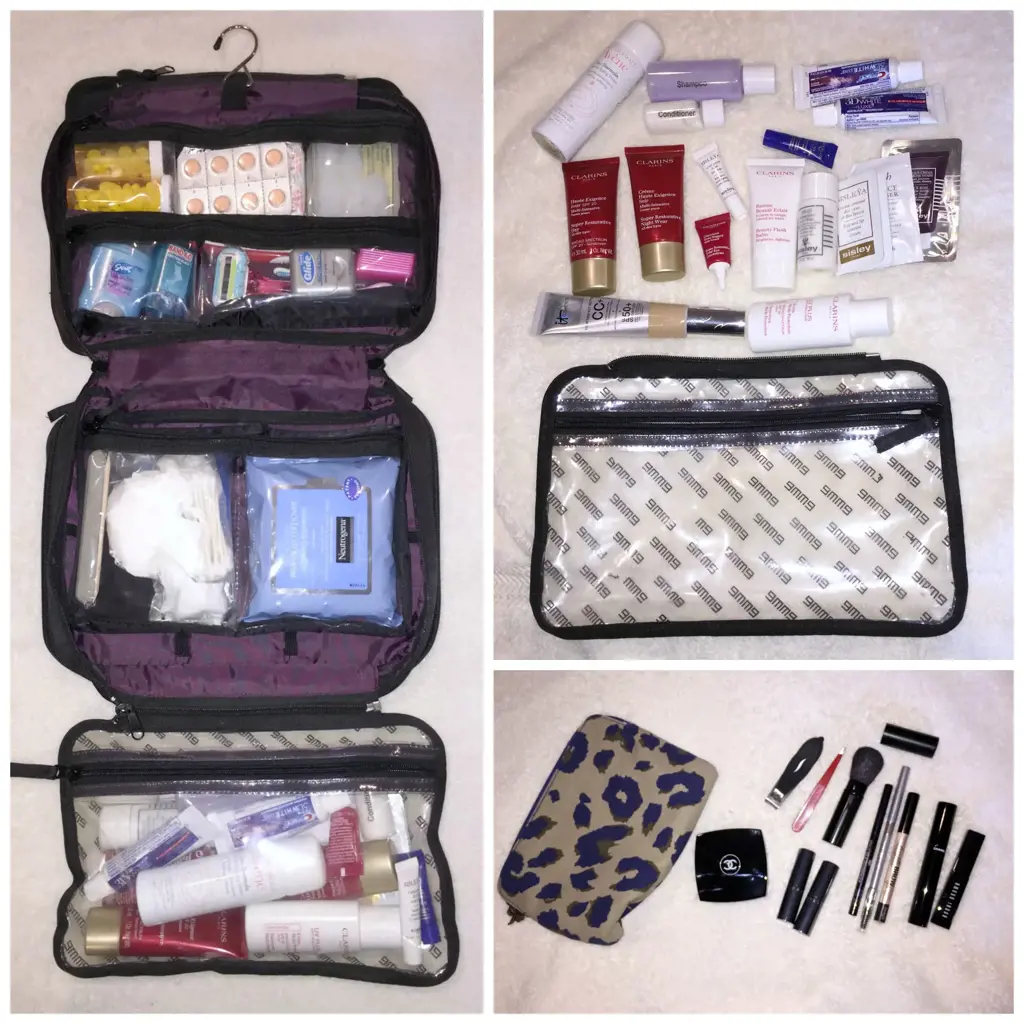
When it comes to packing for a flight, there are certain restrictions on what you can bring in your carry-on luggage. These restrictions can vary depending on the airline and the country you are flying from or to. One common question that travelers often ask is whether they can bring their own shampoo and conditioner on a flight.
The answer to this question is yes, you can bring your own shampoo and conditioner on a flight. However, there are some rules and guidelines that you need to follow.
Firstly, the Transportation Security Administration (TSA) has set limits on the amount of liquids that you can bring in your carry-on luggage. According to the TSA's 3-1-1 rule, any liquids, gels, or aerosols should be in containers that are 3.4 ounces (100 milliliters) or less. These containers should be placed in a clear, quart-sized, plastic bag, with one bag per passenger.
This rule applies to all types of liquids, including shampoo and conditioner. So if you have travel-sized containers that are 3.4 ounces or less, you can bring them in your carry-on luggage.
It is important to note that the 3-1-1 rule only applies to carry-on luggage. If you plan to check your luggage, you can pack larger bottles of shampoo and conditioner in your checked bags. However, it is a good idea to place them in a sealed plastic bag to prevent any leakage.
In addition to the size restrictions, it is also important to consider the security screening process. When going through the security checkpoint, you will need to remove the quart-sized bag with your liquids from your carry-on and place it in a separate bin for screening. This helps the security officers identify any potential threats more easily.
If you are unsure about the specific rules and regulations of the airline or country you are flying with, it is always a good idea to check with the airline or your local airport authority before your flight.
In conclusion, you can bring your own shampoo and conditioner on a flight as long as they comply with the TSA's 3-1-1 rule. Make sure your containers are 3.4 ounces or less and placed in a clear, quart-sized, plastic bag. Remember to remove the bag from your carry-on during the security screening process. Safe travels!
Exploring the Paradisiacal Key West: An Essential Guide to Travel Restrictions and Tips
You may want to see also

Are there restrictions on the size of toiletries I can bring in my carry-on bag?
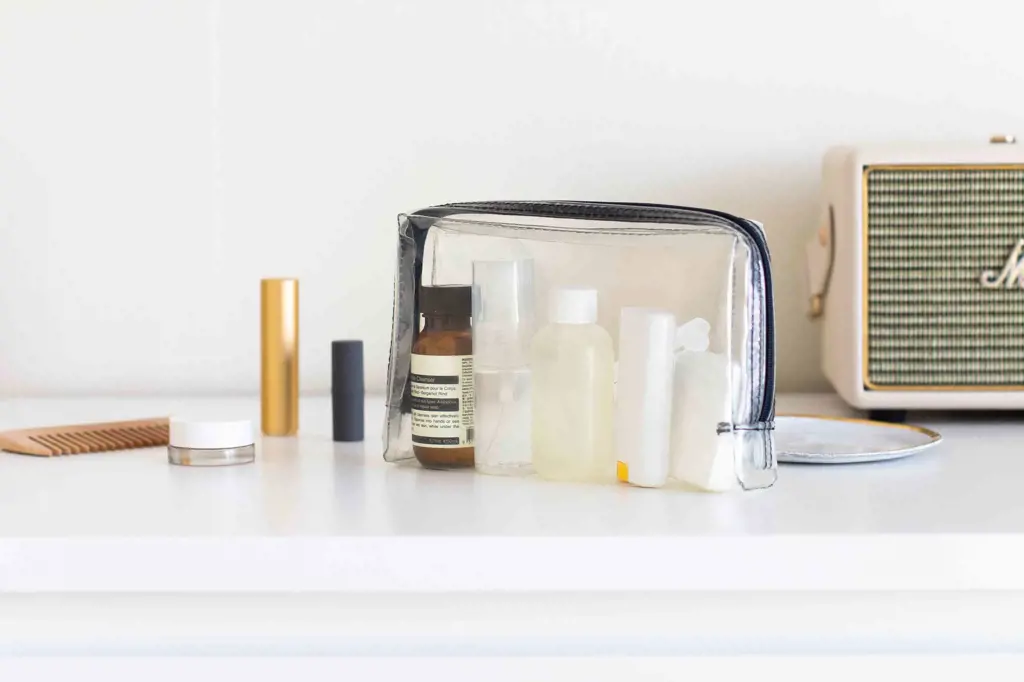
When it comes to traveling with toiletries in your carry-on bag, there are indeed restrictions on the size of liquid, gel, and aerosol products you can bring on board. These restrictions are in place to ensure the safety and security of all passengers traveling by air.
In general, the Transportation Security Administration (TSA) allows travelers to bring toiletries in containers that are 3.4 ounces (100 milliliters) or less. These containers must be placed in a clear, quart-sized plastic bag, with each passenger limited to one plastic bag.
This rule applies to all types of toiletries, including shampoo, conditioner, lotion, toothpaste, and other liquid, gel, or aerosol products. It is important to note that each container must be 3.4 ounces or smaller, even if it is only partially filled. For example, if you have a 6-ounce bottle of shampoo that is halfway full, you still must transfer it into a smaller container that meets the 3.4 ounce requirement.
There are some exceptions to this rule. If you require larger quantities of liquid medications, baby formula, breast milk, or juice for medical or special dietary purposes, you are allowed to bring them in your carry-on bag. However, you may be subject to additional screening procedures.
It is also important to mention that toiletries larger than 3.4 ounces can be packed in your checked luggage. However, it is always a good idea to double-check with your airline's specific guidelines to ensure compliance with their policies.
When going through airport security, you will need to remove the quart-sized bag containing your toiletries from your carry-on bag and place it in a bin for screening. This allows security personnel to easily inspect the contents of your toiletries and ensure that they meet the size restrictions.
If you are unsure about the size of your toiletries or have any questions, it is best to check with the TSA or your airline before your trip. They will be able to provide you with the most up-to-date information and ensure a smoother security screening process.
In conclusion, there are restrictions on the size of toiletries you can bring in your carry-on bag. The TSA allows containers that are 3.4 ounces or less, which must be placed in a clear, quart-sized plastic bag. It is important to follow these guidelines to ensure a hassle-free experience at airport security.
The Impact of ADF Overseas Travel Restrictions on Military Operations
You may want to see also

What items are not allowed in my carry-on bag in terms of toiletries?
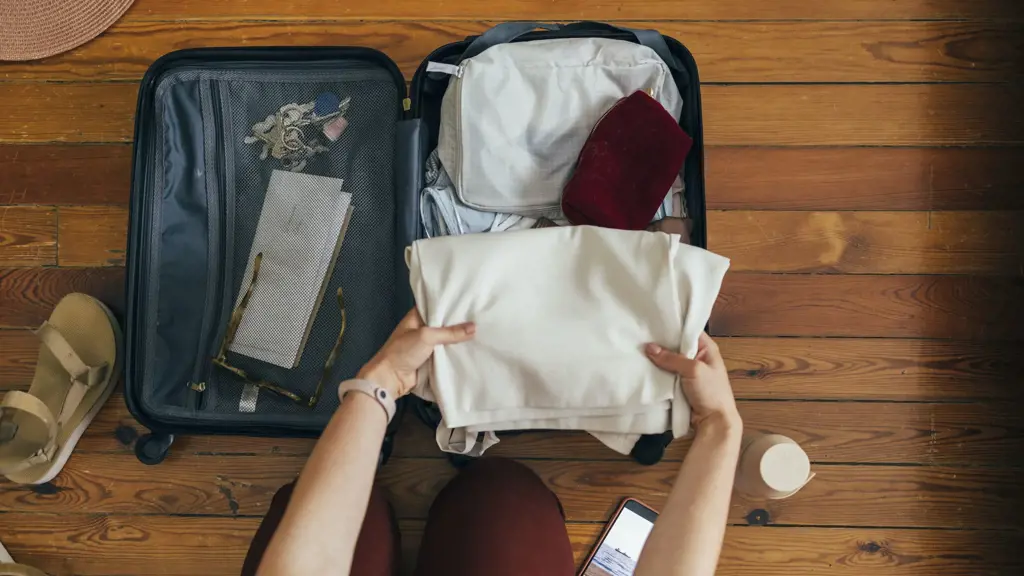
When it comes to packing your carry-on bag for a flight, it's important to be aware of the restrictions placed on certain items, especially toiletries. The Transportation Security Administration (TSA) has put regulations in place to ensure the safety of all passengers. Here's a guide to help you understand what toiletries are not allowed in your carry-on bag.
- Liquids: Any liquids, gels, or aerosols in containers larger than 3.4 ounces (100 milliliters) are generally not allowed in carry-on bags. These items must be placed in your checked luggage instead. This includes items like shampoo, conditioner, lotion, liquid soap, toothpaste, and mouthwash. However, there are exceptions for medically necessary liquids and baby items such as formula or breast milk. These items may be allowed in larger quantities but must be declared to a TSA officer at the security checkpoint.
- Sharp objects: Items such as razors, box cutters, and scissors with blades longer than 4 inches are not allowed in carry-on bags. These items should be packed in your checked luggage. However, small, rounded-tip scissors with blades shorter than 4 inches may be allowed. It's always best to double-check with the TSA guidelines or contact your airline for specific rules.
- Flammable or explosive materials: Items such as lighter fluid, flammable aerosols, and fireworks are not allowed in carry-on bags. Additionally, self-defense items like pepper spray or stun guns are prohibited. These items pose a risk to the safety of passengers and should be left at home or packed in checked luggage if allowed by the airline.
- Hazardous materials: Any item that could be considered hazardous, such as corrosives, toxic substances, or radioactive materials, is strictly prohibited in carry-on bags. This includes items like bleach, drain cleaners, and certain types of batteries. It's important to research and understand what materials are classified as hazardous and ensure they are not packed in your carry-on bag.
- Other prohibited items: The TSA has a list of items that are not allowed in carry-on bags for various reasons. These include but are not limited to firearms, replica or toy guns, brass knuckles, and certain sporting equipment like baseball bats or golf clubs. These items should be packed in checked luggage or left at home.
It's important to familiarize yourself with the TSA guidelines for carry-on baggage to avoid any issues at the security checkpoint. Remember to pack any liquids in travel-sized containers and place them in a clear, resealable plastic bag. Additionally, it's always a good idea to check with your specific airline as they may have additional rules or restrictions. By following these guidelines, you can ensure a smoother and more efficient screening process at the airport.
Understanding the Adjustment of Status Travel Restrictions: What You Need to Know
You may want to see also

Are there any exceptions or special rules for certain types of toiletries, such as medications or baby products?
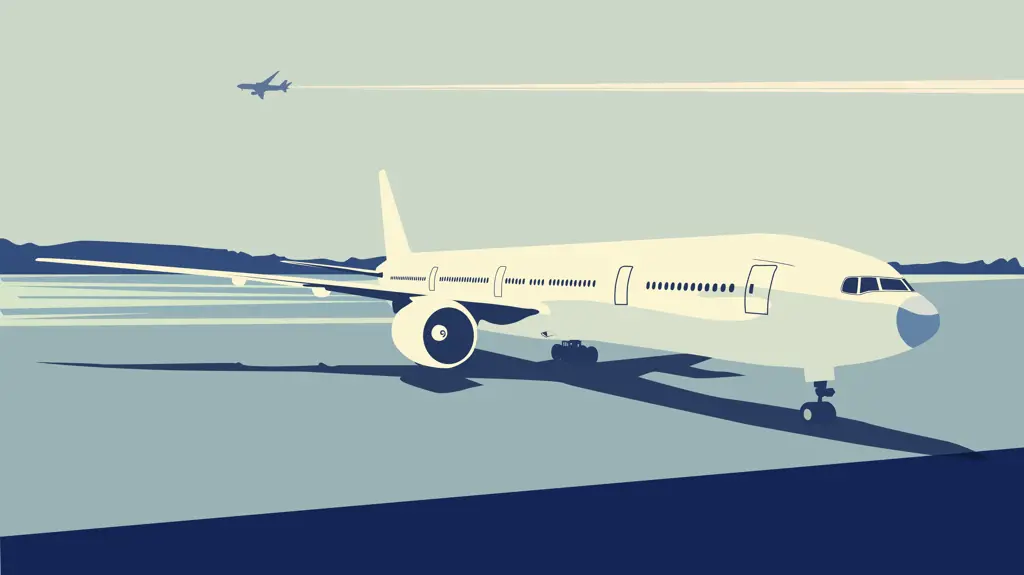
When it comes to packing toiletries for travel, there are generally no exceptions or special rules for certain types of toiletries, such as medications or baby products. However, there are some important considerations to keep in mind to ensure that you are able to bring these items with you without any issues.
Medications: If you need to bring prescription medications with you while traveling, it is important to carry them in their original packaging with your name clearly labeled on the label. It is also a good idea to carry a copy of the prescription or a note from your doctor to verify the need for these medications. This is especially important if you are traveling internationally, as some countries have strict regulations on bringing medications across their borders. It's always a good idea to check the restrictions and requirements of your destination country before you travel.
When it comes to over-the-counter medications, such as pain relievers or allergy medications, these are generally allowed in your carry-on luggage. However, it is always a good idea to check the Transportation Security Administration (TSA) guidelines for the most up-to-date information. In general, it is recommended to keep these types of medications in their original packaging and store them in a clear, plastic bag for easy inspection at security checkpoints.
Baby Products: If you are traveling with a baby or young child, you may need to bring certain baby products with you, such as baby formula, baby food, or diapers. These items are generally allowed in both carry-on and checked luggage, but there may be restrictions on the size or quantity that you can bring. It is always a good idea to check the specific guidelines of the airline or transportation authority that you are traveling with to ensure that you are in compliance with their regulations.
In general, it is recommended to pack baby products in a separate bag within your luggage to make it easier for security personnel to inspect if needed. This can help to expedite the screening process and ensure that you are able to bring these essential items with you without any issues.
It is important to note that while there are generally no exceptions or special rules for certain types of toiletries, it is always a good idea to check the regulations of your specific destination or airline before you travel. This will help to ensure that you are in compliance with any local or international regulations and avoid any unnecessary issues or delays during your journey.
In conclusion, while there are generally no exceptions or special rules for certain types of toiletries, such as medications or baby products, it is important to follow certain guidelines to ensure that you are able to bring these items with you without any issues. Make sure to pack medications in their original packaging with your name clearly labeled and bring any necessary documentation or prescriptions. For baby products, be aware of any size or quantity restrictions and pack them separately for easier inspection. Taking these steps will help to ensure a smooth and hassle-free travel experience.
Understanding AETC Mexico Travel Restrictions for a Smooth Vacation Experience
You may want to see also
Frequently asked questions
The Transportation Security Administration (TSA) has specific regulations regarding toiletries carried onto airplanes. These regulations are in place to ensure the safety of all passengers onboard. According to the TSA, liquids, gels, and aerosols carried in carry-on bags must be in containers that are 3.4 ounces or less and all containers must be placed in a clear, quart-sized plastic bag. Each passenger is allowed to carry only one bag of this size.
Yes, there are some exceptions to the toiletries restrictions for air travel. The TSA allows passengers to carry larger quantities of liquids, gels, and aerosols in their checked baggage. However, it's important to note that these items must still be in containers of 3.4 ounces or less. Additionally, there are certain medical and infant care items that are exempt from the restrictions, such as prescription medicines, baby formula, and breast milk. These items may be carried in larger quantities, but they may be subject to additional screening.
Solid toiletries, such as bar soap, solid deodorant, and solid shampoo, are generally not subject to the same restrictions as liquids, gels, and aerosols. These items can be carried in your carry-on luggage without any size or quantity limitations. However, it's always a good idea to check with the specific airline you are flying with, as there may be additional restrictions or guidelines in place. It's also worth noting that any liquid-like consistency, even if it's in a solid form, may still be subject to the 3.4-ounce container rule.


